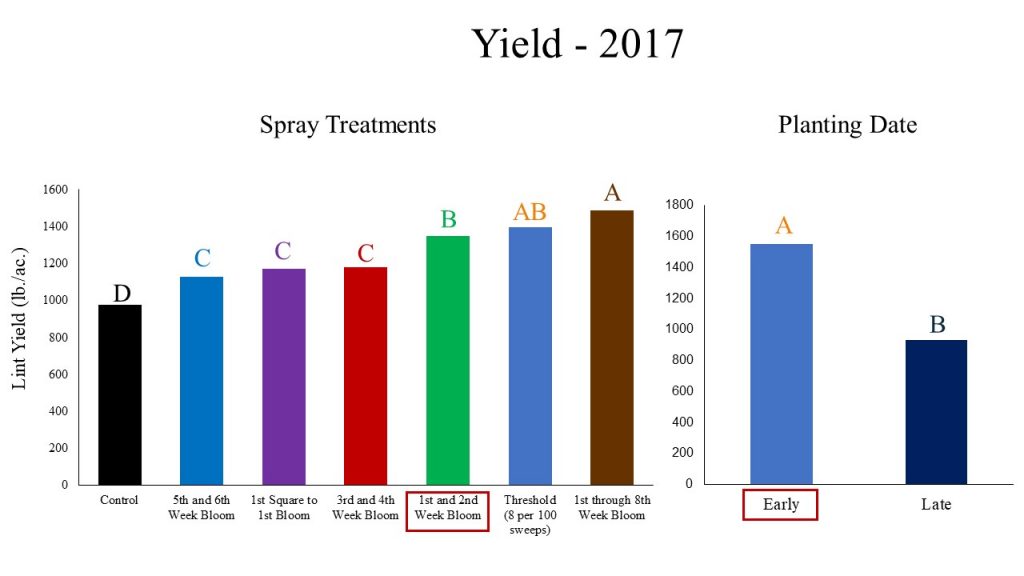I made an error this week in my Southeast Ag Fax post and referred to the last spray date in cotton as “cutout.” What I should have said is, cotton should be sprayed for an above threshold plant bug population until the bolls that you anticipate harvesting are past susceptibility (~250dd). This may or may not coincide with cut-out (4 nodes above white flower). Keep in mind that, as the season progresses, sprays will offer less of a yield benefit. In Virginia, our critical window of protection is early to mid-bloom. There is a small and real yield benefit in spraying until week 5 or 6, but the lint gain may not offset the cost of applications. Late planted cotton is at high-risk because it overlaps longest with large bug populations and the plants have less time to compensate.

This season, there has been very poor performance of pyrethroids against plant bugs. Bifenthrin (Brigade and generics) performs better than other active ingredients including lambda-cyhalothrin (Karate, Besiege, Warrior II, Lambda-Cy) and beta-cyfluthrin (Baythroid). Acephate (Orthene 97) and sulfoxaflor (Transform) are better products. Diamond, an insect growth regulator that targets nymphs, should be tank mixed with either acephate at 8 oz. or bifenthrin at 6.4 oz. Currently, I do not recommend Diamond with other products without consulting your Amana representative. Diamond is added to prevent infestation and kill nymphs. It may not have quick knock-down. We have tested Diamond’s residual until two weeks post spray. Acephate alone works well at 8 oz. and is not rain fast. I have concerns with acephate and aphid populations that I will discuss this in another post. Both Bidrin and acephate are effective against plant bugs and stink bugs. For bollworms, I recommend Prevathon or Besiege. A well-timed pyrethroid spray may work and it will need to target small worms before they move inside of squares and bolls. Overall, stink bug pressure is moderate and bollworm pressure is light to moderate. Eggs and small worms have been spotted in low numbers in two-gene cotton. Please keep in mind that I am rarely called when insecticides work well. Keep me posted if your specific combination looks terrific!
Our cotton field day is on August 16th at the Tidewater Research Station. Seth Dorman and I will cover insect sprays, scouting techniques, and other topics. Josh Holland, ANR Southampton, and I will provide portable summary tables of product performance (as we have measured in 2019 on-farm trials).
Thanks to Stan Winslow from Tidewater Ag for his advice and video evidence that big-eyed bugs eat plant bugs. Thanks to Josh, Seth, and the TAREC team for their continued scouting efforts.
Happy August!
